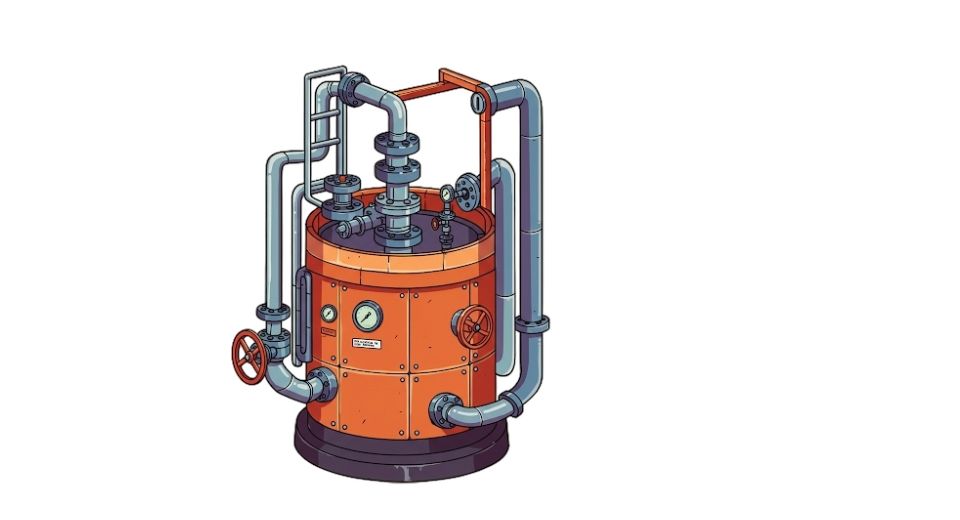
May 05, 2025

In Keeping an Eye on the North America Class 1 Industrial Disposal Well Market, the most recent publication of Metastat Insight examines how operations have changed with an increase in regulatory knowledge and technological adjustments. Within the context of industrial waste management, Class 1 disposal wells are ever more integrated into the various methods of handling hazardous materials or deep geological sequestration of certain types of material. They dot the North American landscape not just because they need to exist here, but instead as a careful response over time to the very real demands of industrial practice for ways to contain waste more efficiently and in a more controlled site.
North America Class 1 Industrial Disposal Well market is estimated to reach $1554.8 million in 2025 with a CAGR of 5.6% from 2025 to 2032.
Operators who fulfill their duties in maintaining and developing these wells are not in a space with much give between precision and responsibility. Waste is assuredly contained below impenetrable geological layers, so that harmful surface ecosystems and aquifers, not to mention human populations, aren't contaminated. So engineering and geological surveying have taken significant center stage in the construction and monitoring of such wells. North America Class 1 Industrial Disposal Well Market, affiliated with large waste-generating industries is not the endpoint by itself, though it connects with other regulated ends. It goes on to be a managed thoroughfare where advanced-designed meets strict procedural oversight.
Permitting processes and oversight mechanisms define the operational framework of this market. Operators must prove long-term stewardship along with technical capability over every phase, from drilling to injection and monitoring, being governed by a structure that expects transparent, meticulous record-keeping. All of these layers of accountability allow for any risks emerging from subsurface injection to be preemptively and prudently addressed. Advances in environmental science and subsurface mapping techniques will continue to transform what seems like an evolving relationship between regulatory bodies and operators. They feed into a system prioritizing durability, environmental containment, and public safety.
Waste streams entering Class 1 disposal wells have become much more diverse as the industry changes its means of production and materials. These differences present new technical problems that need to be addressed for compatibility with existing well structures and geological formations; thus, often, the operator must vary its approach according to the chemical makeup and possible interaction of injected materials. It is indicative of a larger trend in the North America Class 1 Industrial Disposal Well Market that has flexibility to adjust to such changes in industrial development without jeopardizing environmental integrity. An evolving set of evaluations and enhancements to injection methodologies would maintain reality resilience over the years.
Technological integration has made inroads, as with most aspects of well management, into unspoken changes that exist in managing such wells. Significantly, remote monitoring tools and advanced logging systems play critical roles in data analytics as they predict performances and detect anomalies. There has been an increase in reliability and a decrease in operational surprises since the shift from manual inspections to digitally informed oversight. These improvements do not eliminate risk, but rather provide another layer of delineated insight into quicker response and payoff decision-making. While monitoring pressures, flow rates, and temperature differentials in real-time has become the norm, operators still rely on ways of defending their sustainable effort against possible risks.
Although disposal wells serve an engineering function, they bear an economic and logistical weight for industries operating all over North America. Many such facilities are deeply integrated with such systems as constituent parts of their waste disposal scheme, and the placement of wells often influences production site locations. Compliance with and active Class 1 disposal site proximity would affect infrastructure investment decisions for a manufacturer, processor, and chemical producer. Hence, the North America Class 1 Industrial Disposal Well Market indirectly has a lot to do today with vast industrial planning across the continent.
Environmental awareness has affected how disposal well operations are perceived by communities, policymakers, and stakeholders alike. Although these wells are generally located far away from crowded areas, public faith remains necessary for their safety and oversight. Operators must balance operational performance with public openness.
Timely disclosures on well testing results, seismic activity data, and subsurface fluid migration investigations will complement this trust-building infrastructure by fulfilling assurances for long-term stewardship. Communication strategies concerning such wells would be as critical as the engineering behind it, given increasing public hostility to industrial processes.
The adaptability of this market has drawn regulatory changes and industrial diversification, which speak of its difficult undertaking to exist. Market players are not merely responding to the current event but preparing for future contingencies. New drilling permits are being secured, sealing materials upgraded, and containment protocols enhanced. Such investments are an acknowledgment that tomorrow's standards not only include today's requirements but also need to be met.
In the perspective of the recent report given by Metastat Insight, the North America Class 1 Industrial Disposal Well Market presents itself as a space characterized by responsibility, technical accuracy, and operational reliability. Belowground waste management affects how things are done up on the environmental stage-greatly in terms of eco-responsibility, industrial feasibility, and public trust. Even if most of the happenings in this market are out of sight to the general public, their impacts are so significant that they serve to maintain the delicately woven balance between industrial development and ecological safeguard. Otherwise, the market keeps on evolving quietly but surely on the pillars of regulation, innovation, and trust.
Drop us an email at:
Call us on:
+1 214 613 5758
+91 73850 57479